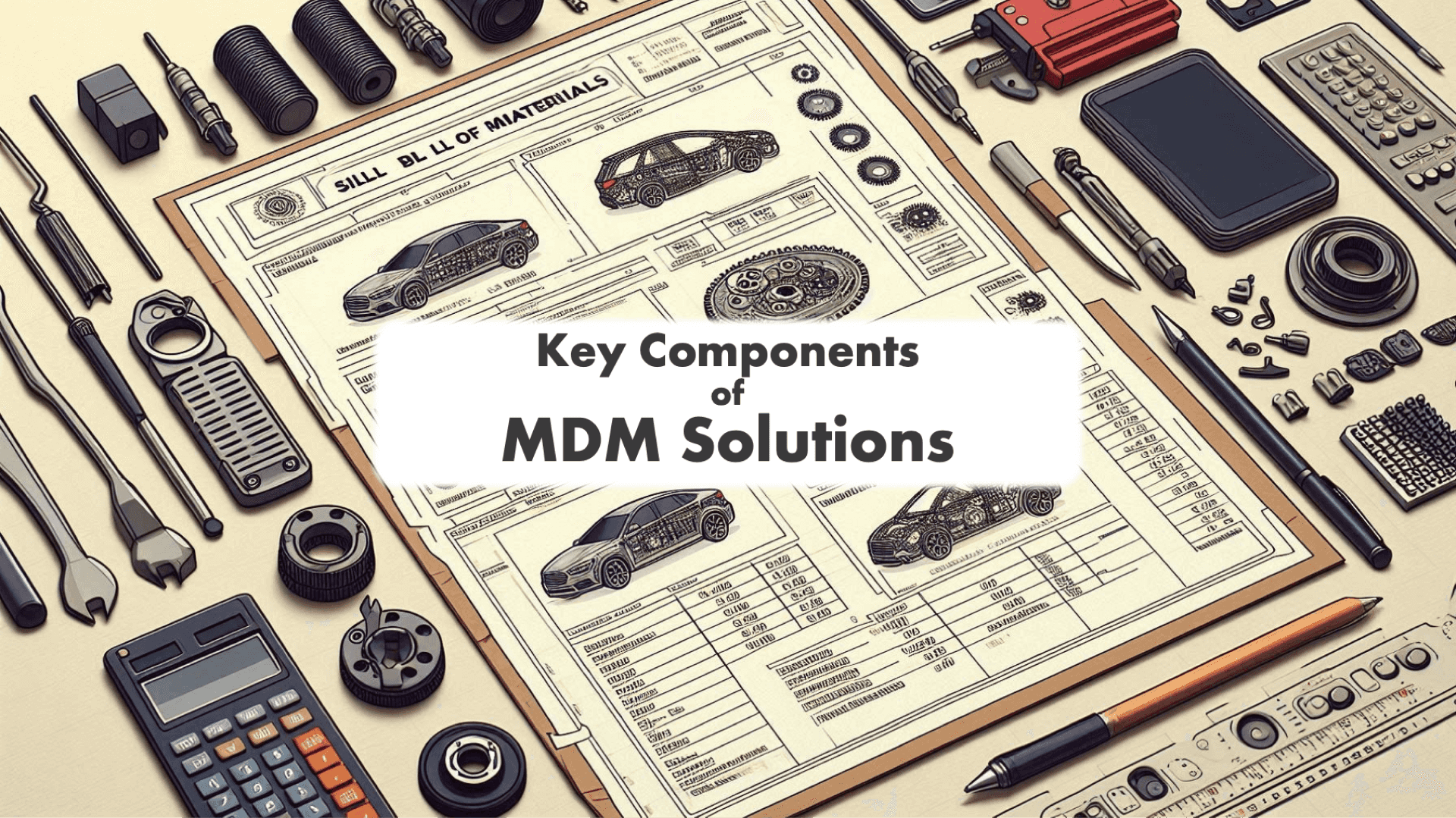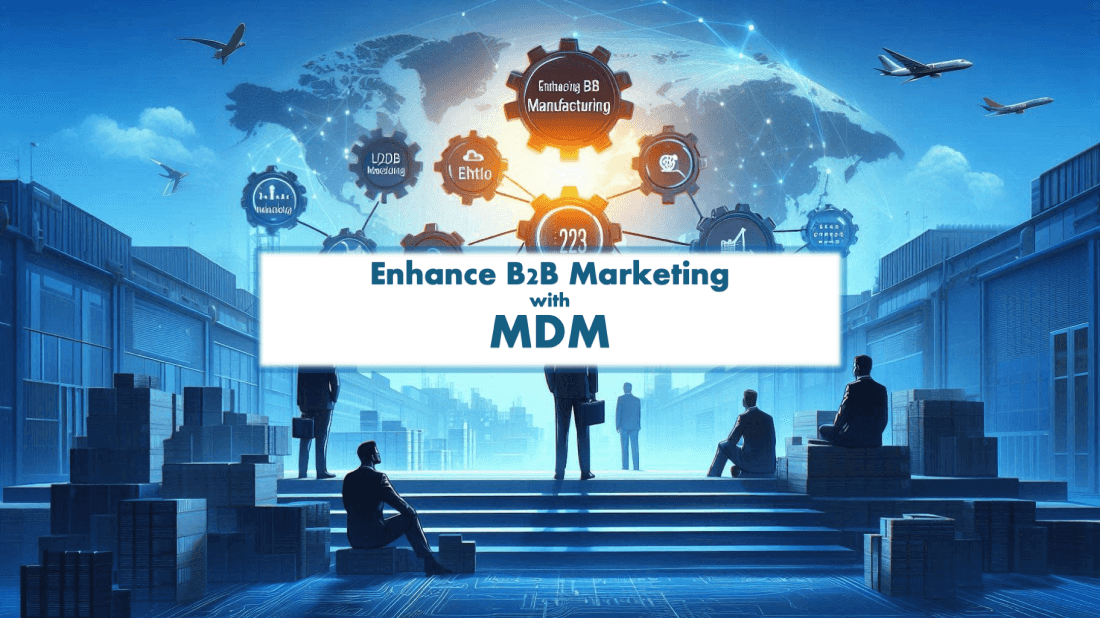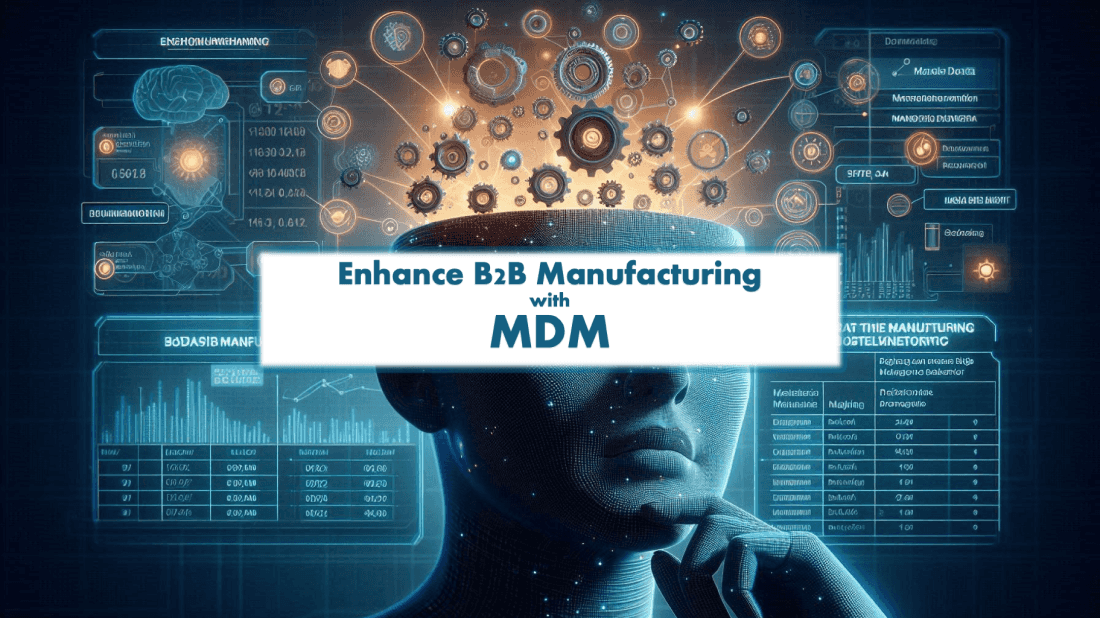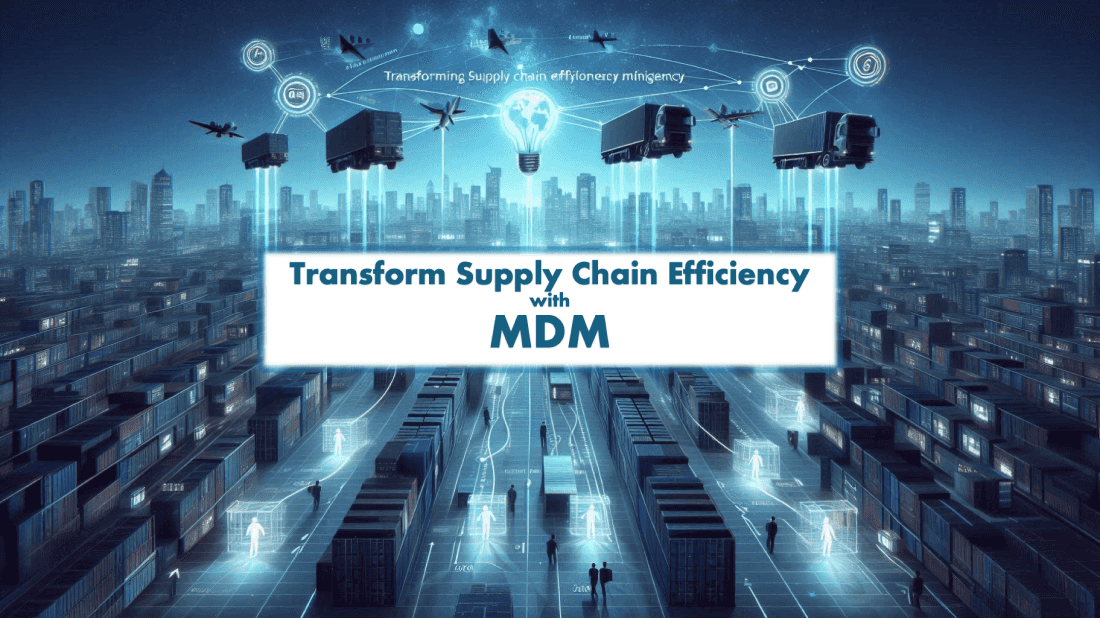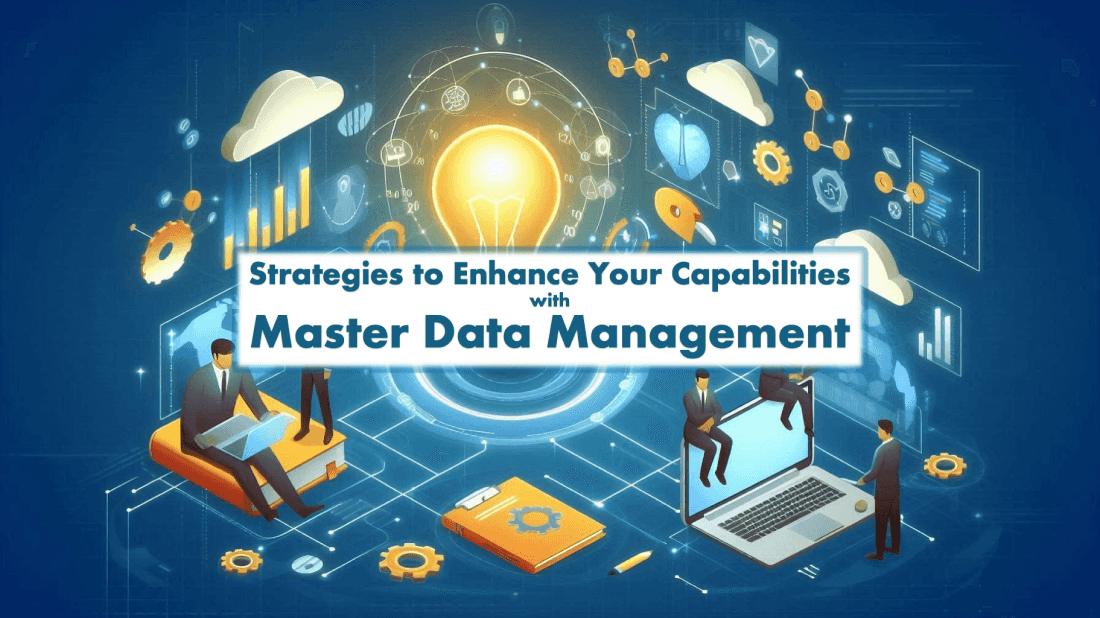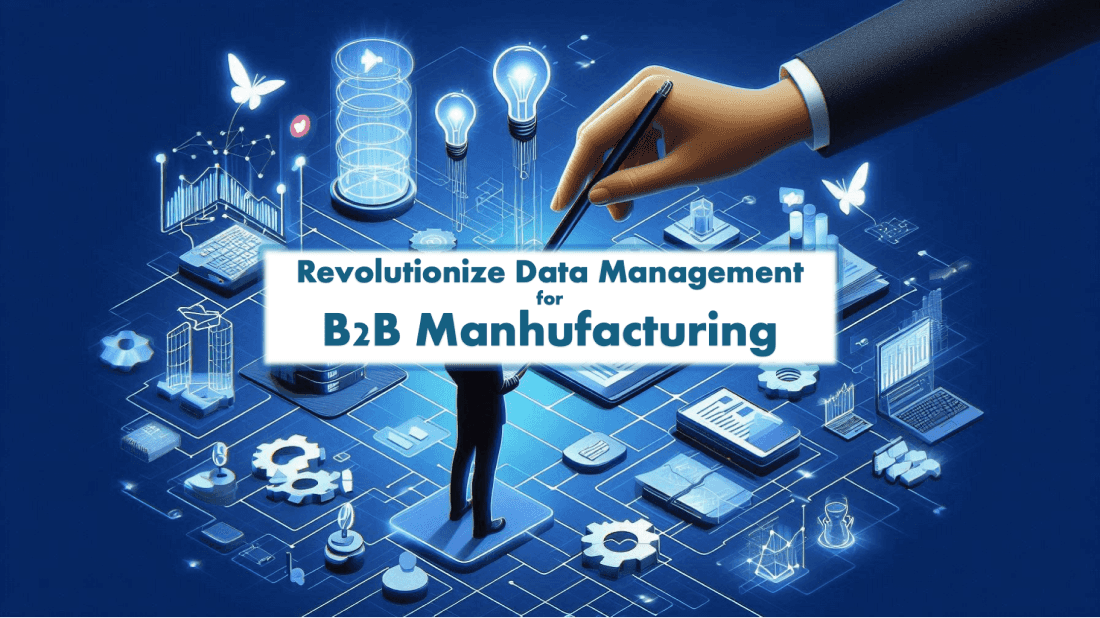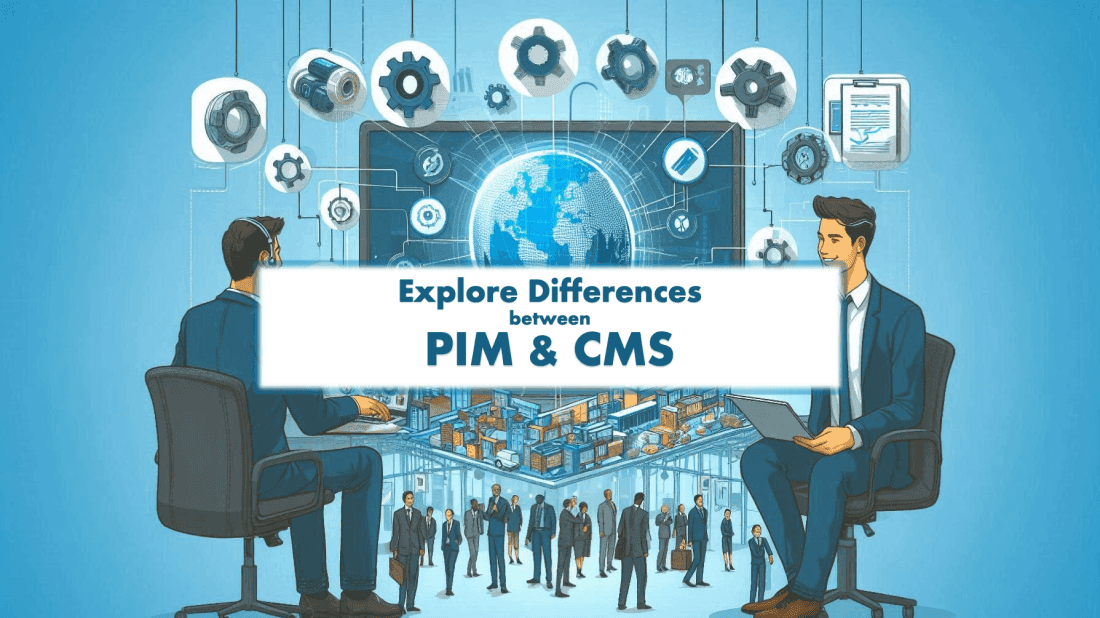Feb 27th, 2024
The Best PIM and DAM Software of 2024
Categories:Product Information Management SystemDigital Asset Management SystemAmong other factors, about 35% of B2B businesses find a lack of understanding about their offerings a serious challenge to their lead generation activities.
Also, leading market research firms are predicting flatline growth for offline business, while online sales should double by 2027.
Given that you have crossed the first challenge of getting your products online, the second challenge now is to generate leads. Lead generation in an online B2B business requires mastery over your product and service data.
Product information management (PIM) and digital asset management (DAM) systems can help you resolve most of the information management barriers. But how do you select the ones that best fit your brand’s job description?
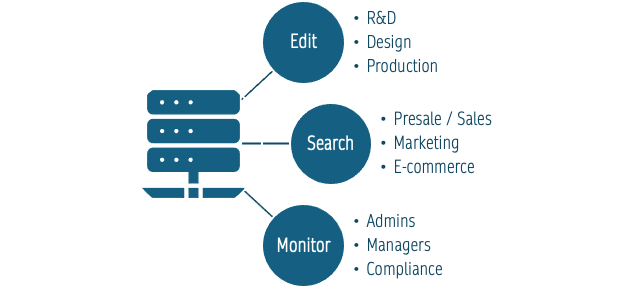
How to Select the Best PIM and DAM Software?
One of the first things to decide is if you want to use an open source or a SaaS-based PIM and DAM software. Your choice depends on the size of your business and the depth of your pocket. For example, SaaS-based PIM and DAM solutions offer cost advantages, so they work better for small and medium-sized businesses. Whereas, open-source solutions will need in-house development teams, and offer full control over features, security, and versions.
In other words, open-source PIM and DAM will be more suitable for capital-rich large enterprises with in-house development expertise. Other than that, here’s what you should look for in the best PIM and DAM solution for your enterprise:
Features for the Best PIM & DAM Software
The best PIM software creates the information flow to keep your consumers well-informed about your products all through the marketing funnel. You can offer increasingly deep product information through the AIDA (Awareness, Interest, Desire, Action) funnel and guide them to purchase.
Here are the features of the best PIM solution that allow you to create a seamless customer experience:
1. Maintain a Single Source of Truth
The ability to store, organize, and manage product data in a centralized repository is a core feature of PIM and DIM. This feature provides a single source of truth and ensures consistency and accuracy of product data throughout the value chain.
2. Seamless Integration & Data Capture
The PIM software should integrate with existing systems and capture product details from all available sources. The data sources can include ERP systems, spreadsheets, and e-commerce platforms.
Similarly, the DAM system must support a wide range of digital assets. Apart from the usual media files, these can also include NFTs, Security Tokens, E-books, Social Media Accounts, etc.
3. Product Content & Metadata Enrichment
Product data creation is one of the major challenges for producers, the best PIM tool should address this with data enrichment features. The PIM is for enhancing product data with additional attributes, configurators, and other rich content to improve the quality of product information.
The DIM software should focus on metadata enrichment for digital assets like product images, videos, design files, and PDFs with product specs.
4. Data Governance and Quality Control
The PIM and DAM solutions should provide granular controls for different roles. For instance, only the production teams should edit the product technical data. Governance features include data validation, enforcing data standards, and implementing workflows for data approval.
5. Search and Retrieval Capabilities
Choose PIM and DAM solutions with powerful search functionalities. For example, advanced search filters, faceted search, and AI-driven tagging, to quickly locate and retrieve assets. This functionality will significantly reduce the time internal teams and partners take in locating and capturing relevant information.
6. Multi-Channel Distribution
The best PIM and DAM systems should support product data distribution across multiple sales channels, including e-commerce websites. We get into the details of creating product descriptions with a combined PIM and DAM later in this article. However, PIM helps your consumers easily access catalogs and technical info in their purchase journey.
7. Localization and Globalization
English content is usually less effective in converting consumers not part of the English regions. So, the best PIM solution should feature multilingual capabilities for product information. Thus, helping you adapt content for different regions and markets.
Similarly, the DAM solution can support multilingual asset management. This will support regional language content availability along with the PIM-provided details.
8. Version Control and Audit Trail
Your consumers or solution teams may be looking for the previous versions or the upcoming versions of your products. The best PIM offers change-tracking features and maintains a version history. Thus, it provides version choices and an audit trail for compliance and accountability.
9. Flexible Data Modeling
The PIM solution should allow you to modify data structures and attributes if you are launching a new product category. Customizable data structures and attributes help accommodate more product types, categories, and variations.
10. Scalability and Performance
The PIM solution should follow data structures and workflows that allow scalability. The pay-as-you-go cost structure of SaaS-based PIM offers more optimized growth for SMEs. However, open-source PIM will need a capital infusion at different stages of business growth. Thus, choose a solution based on the volumes of product data and projected business growth to achieve uncompromising performance.
11. User-Friendly Interface
The simplicity of PIM UI will help quick adaptation among your team members, faster actions, and minimal errors. Thus, the best PIM for you must feature an intuitive and user-friendly interface for data entry, management, and reporting.
12. Integration with Analytical and Creative Tools
Analytics and reporting tools make your PIM choice future ready. However, you should look for not only built-in analytics but also integration possibilities with popular data analytics and visualization tools.
Similarly, choose a DAM solution that seamlessly integrates with popular creative tools and software. Tools like Adobe Creative Cloud, Magento, Opencart, etc. streamline asset workflows and enable direct editing and publishing.
13. Collaboration and Sharing
The crux of the PIM and DAM feature lies in teamwork, and today teamwork requires seamless collaboration across geographies. Also, you will need to share region-relevant product data and media with your channel partners.
Thus, the feature of secured data and media sharing with external stakeholders is another critical factor in your PIM and DAM choice. This can further include a customization and configurator option for added automation.
14. Security and Permissions
Robust security features, role-based access controls, encryption, and data privacy compliance are all hygiene features in any software solution today. Your PIM and DAM solutions should also protect sensitive product information from unauthorized access.
15. Customer Support and Training
You may choose PIM and DAM solutions which are simple to operate and mostly automated. But as your business grows PIM complexity will only increase. Access to comprehensive customer support, training resources, and documentation will be valuable to get new users started with it quickly.
16. PIM and DAM Integration
Digital assets like images, videos, and documents are critical marketing materials, and DAM provides robust management for the digital content. Thus, Integration with DAM systems to manage and distribute digital assets alongside product data will be valuable for your online growth.
PIM & DAM Integration Benefits
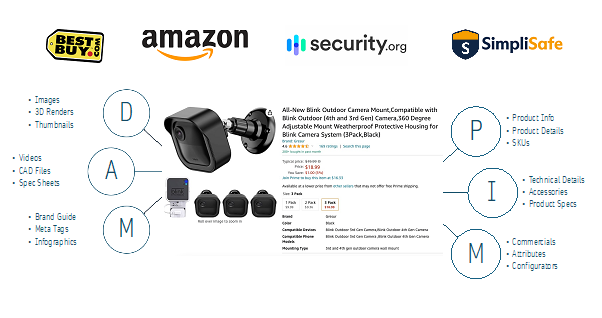
PIM and DAM both are enterprise data management solutions with a baseness for online and e-commerce presence. While PIM offers product data optimization, DAM provides digital asset organization and management capabilities. Both features are critical for your e-commerce presence where:
- Product listings and descriptions are managed by PIM capabilities, and
- Product brand assets, such as product images and digital files like User Manuals, use case files, etc. are managed by the DAM functions.
Together PIM and DAM deliver a robust content management system complete with digital marketing and online retailer support functions. The goal of integrating PIM and DAM is to create more attractive and informative product description pages. These product descriptions can offer incrementally detailed information for interested audiences.
Remember that creative assets are necessary to engage and draw in the top-of-the-funnel audience. This is where digital asset management systems are crucial. But once a prospective buyer lands on your product description page, conversion is a matter of comprehensible details.
Neurologik’s ProductHub – PIM + DAM + More
Neurologik’s ProductHub is a SaaS-based solution that combines the features of PIM, DAM, MDM, CMS, and more. The objective is to enrich the entire value chain of the product data flow, ultimately leading to – faster time to market, and increased trust. The combined features add consistency to your product data.
So, you can remain confident whether you are sharing top-level information with brand teams or technical details with a system integrator. ProductHub helps you enrich your product data with attributes, enabling unlimited configuration possibilities. You can publish these product attributes to improve search, and website features, and offer self-solution design to your end users.
ProductHub not only fills your product data gaps but also allows up to 90% reduction in time-to-share with multilevel automation. You can confidently share solutions and products with your channel partners across geographies with ProductHub’s multilanguage catalog feature.
So, if you plan to go global from your 100-square-meter production house in North America, ProductHub provides the platform for it. Also, APIs make integration with you and your channel partner’s existing CRM, ERP, and CMS a smooth ride.
FAQs
- Flexible Data Modeling: Supports diverse product data structures.
- Data Governance and Validation: Ensures data accuracy and consistency.
- Channel-Specific Content Management: Customizes content for different sales channels.
- Integrated Workflows: Streamlines collaboration and approvals.
- API Integration: Connects with other systems seamlessly.
